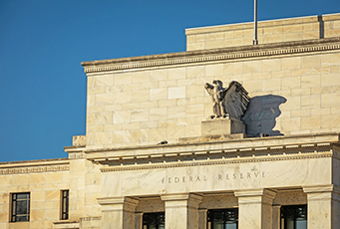Everyone is talking about an upcoming economic recession! Do you agree with the economists? Understanding the data they use may help you better anticipate the impact a recession could potentially have on your financial wellbeing.
Economists use a variety of economic data to formulate their opinions about where the economy is positioned in an economic cycle. It makes perfect sense to them, but it often is confusing and meaningless to everyone else. Here are some of the more common economic indicator data points and their significance.
Most economic data used to determine the overall health of the U.S. economy can be classified into three categories: Leading Economic Indicators, Coincident Economic Indicators, and Lagging Economic Indicators. We’ll use the most common data points from each of three indexes created by The Conference Board, a member-driven, non-partisan think tank, to cut through the confusion.
Leading Economic Indicators
Leading Economic Indicators, used to predict the next phase of a business cycle, are a collection of data preceding economic events. Here are five you’ll want to understand.
- Interest Rates – The Federal Reserve controls the Federal Funds Rate, which helps to set rates that affect our everyday finances. As the Fed raises interest rates, it becomes more expensive to borrow money. Historically, higher interest rates cause businesses and consumers to decrease their spending, ultimately slowing down the economy. When the Fed lowers interest rates, making it much cheaper to borrow money, the opposite has held true.
- Durable Goods Orders – This is a measure of new durable goods orders placed with domestic manufacturers. Durable goods are expensive items – such as computer equipment, industrial machinery, airplanes, and tanks – with a lifespan of three years or more. This measure can provide insight into how busy factories may be in the near future.
- Stock Market – This important leading indicator is a good measure of the overall trajectory of businesses. If the stock market is increasing, then shareholders have confidence in the future growth of U.S. businesses. A decline could potentially mean investors are exiting to invest their money into safer alternatives. This could signal a downturn in the economy.
- Manufacturing Jobs – This includes jobs in factories, plants, mills, and businesses that create new products directly from raw materials or components. If manufacturing jobs are high or on the rise, manufacturers employing these workers are likely confident in business growth.
- Building Permits – These offer an insight into the construction sector of the economy. When building permits are high, it indicates companies are planning to build more homes. This sends a ripple effect throughout the economy – employment in the construction sector and consumer spending will both increase since these new homes will need to be furnished and landscaped.
Coincident Economic Indicators
Coincident Economic Indicators are a collection of data showing the current state of economic activity, as opposed to predicting the future state of the economy. Here are two Coincident Economic Indicator data points to note.
- Non-farm Payroll Employment – This tracks the monthly increase/decrease in the number of full-time and part-time employees in business and government. If this number rises, jobs were introduced into the economy. If it decreases, jobs were lost.
- Personal Income – This measures the monthly increase or decrease in income that households receive from all sources of real salaries and other earnings. This data point helps measure the general health of the economy and consumer spending.
Lagging Economic Indicators
Lagging Economic Indicators are a collection of data measurable only after a change has already occurred in the economy. These data points can be used to confirm trends or signal changes in trends. Here are two of the most important ones.
- Gross Domestic Product (GDP) – GDP is one of the most common indicators used to determine the health of an economy. It represents the total value of U.S. production during a period (usually each quarter) within the country’s borders. Based on the GDP, economists can determine if the U.S. economy is expanding or contracting.
- Consumer Price Index (CPI) – CPI measures U.S. inflation, the increase in the price of goods and services purchased by consumers over a given timeframe. The Federal Reserve’s long-term target for inflation is historically around 2 percent.
Summary
We’ve covered nine economic indicators for examining an economy, but there are more. Many are related to one another, even though they may be in separate indexes. Economists consistently debate over which ones are more important when determining a country’s past, current, and future economic strength. Leave that to them. By expanding your knowledge in this area, you can better understand how this economic data will affect your finances. And that’s the most important thing!
Schedule a Consultation
We have helped our clients answer these questions and more. If you want a clear understanding of your financial future, and need help making changes to reach your goals, schedule a consultation and we can get started.
Recommended Articles
Private Equity and M&A in a Low-Rate World
Deal flow is the stream of business proposals, investment...





